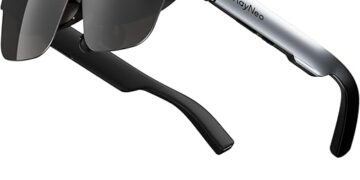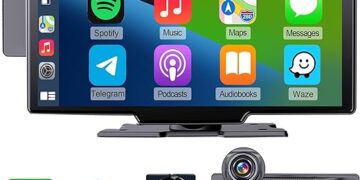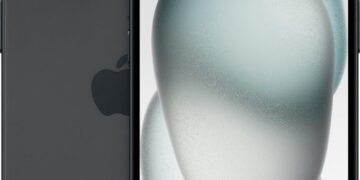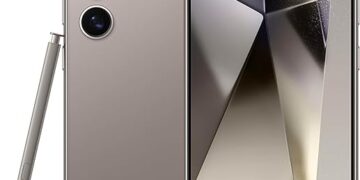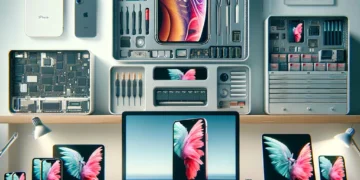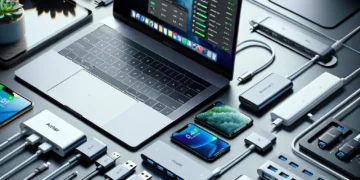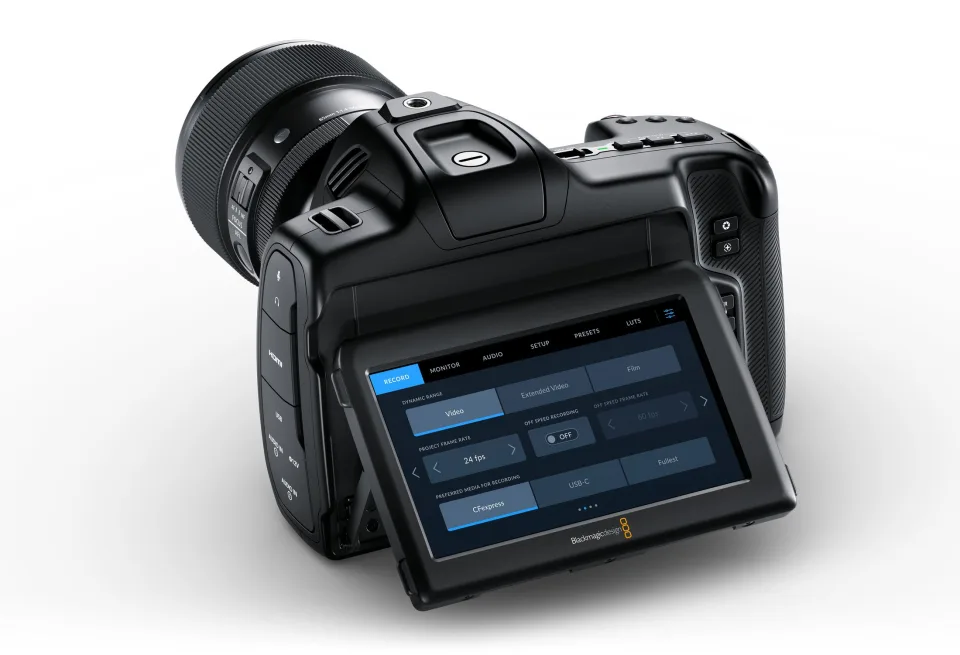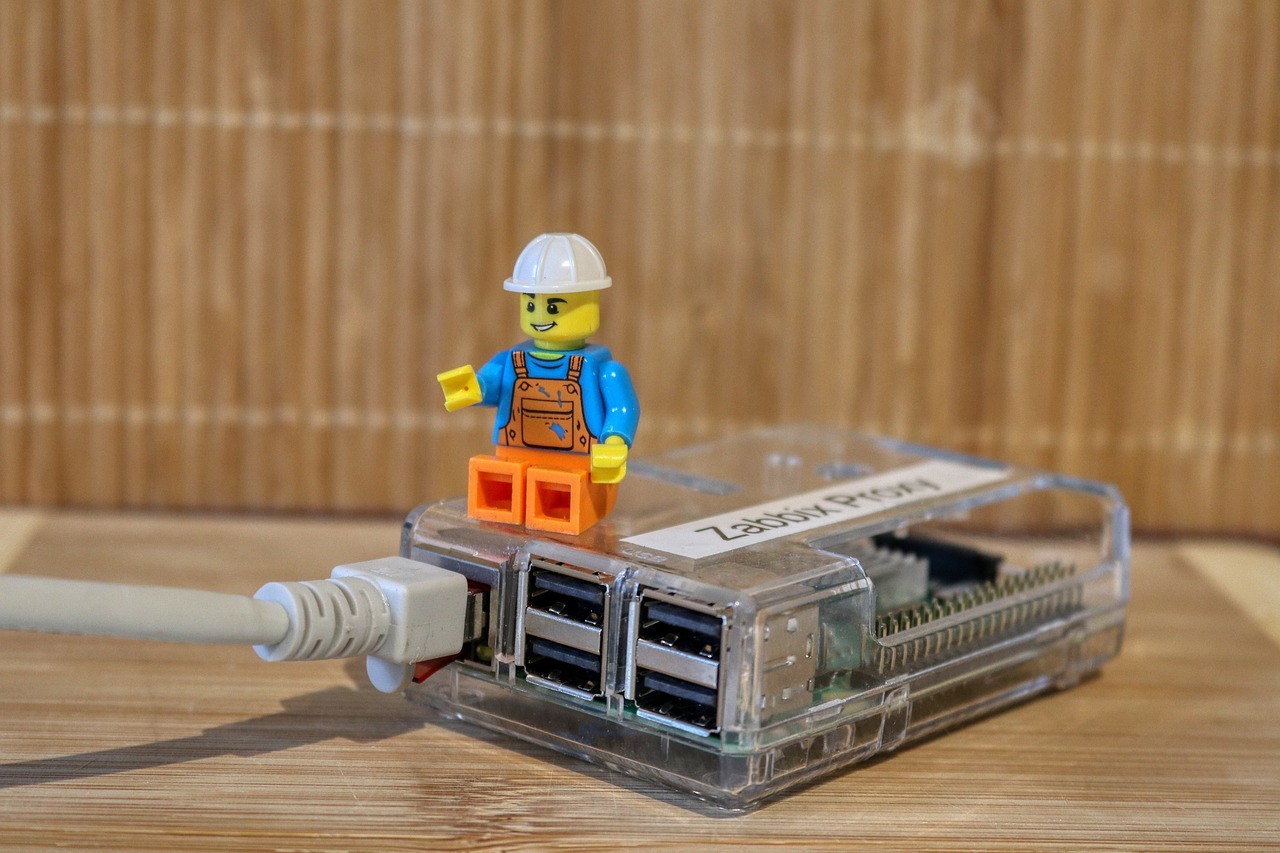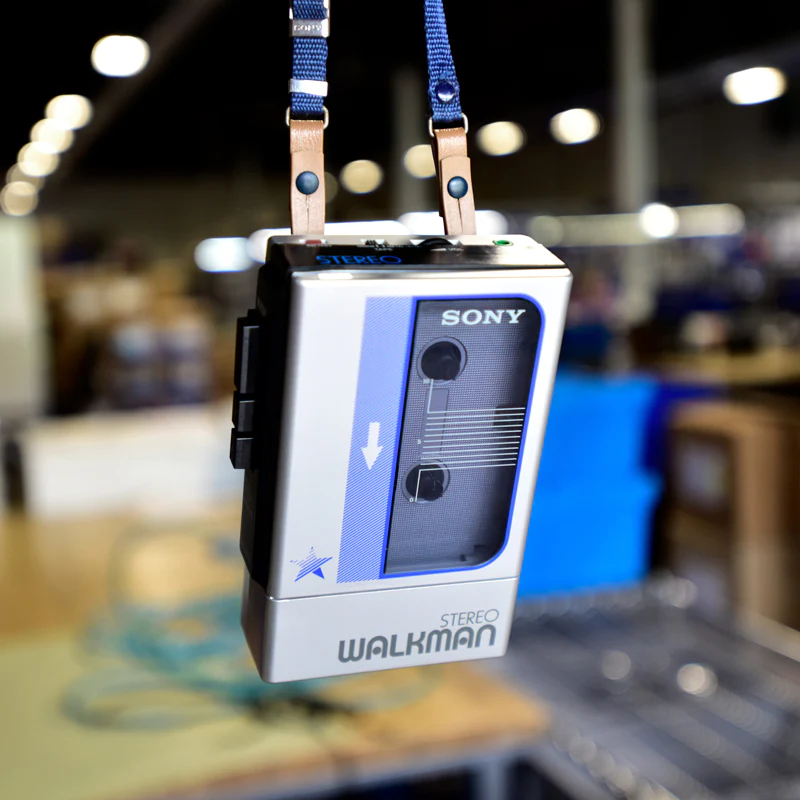Standardizing smartwatch charging is the solution to frustration and waste in the wearable market. This article explores the lack of standardization in smartwatch charging methods, the inconvenience it causes for users, and the environmental impact. It emphasizes the need for collaboration between smartwatch brands and industry standardization organizations. The article also discusses the benefits of standardized charging for users, such as greater flexibility, reliable third-party accessories, and reduced cost. Additionally, it highlights the positive environmental implications, including minimized e-waste generation and promotion of recycling.
The wearable market has seen a massive growth in the past decade, with smartwatches and fitness trackers becoming increasingly popular. However, one recurring frustration for Android users is the lack of standardization in smartwatch charging methods. Unlike Apple Watch users who enjoy the convenience of a universal wireless charger, Android users are burdened with the need for different chargers for each brand and sometimes even different models within the same brand. This inconsistency in charging methods not only leads to user frustration but also contributes to unnecessary waste. In order to improve user experience and address the environmental impact, it is high time for the smartwatch industry to standardize charging across the platform.
The Need for Standardizing Smartwatch Charging
Inconsistency in Charging Methods
The wearable market has experienced rapid growth over the past decade, with smartwatches and fitness trackers becoming increasingly popular. However, when it comes to charging these devices, there is a lack of consistency. Unlike Apple Watch users who enjoy the convenience of a universal wireless charger, Android smartwatch users have to deal with different charging cables for each brand and sometimes even for different models within the same brand. This inconsistency in charging methods is not ideal for users and highlights the need for standardization.
Proprietary Chargers per Smartwatch Maker
Currently, each smartwatch maker uses proprietary chargers, which means that if you want to switch to a different brand or upgrade to a newer model, you’ll likely have to purchase new charging cables. This lack of compatibility between smartwatches can be frustrating and costly for users. For example, if you own a Samsung Galaxy Watch 6 and decide to try out the new Pixel Watch 2, you’ll need to buy new charging cables since the two watches use different charging methods. Even within the same brand, changes in charging methods can cause inconvenience. For instance, the first-generation Pixel Watch used inductive charging, while the new Pixel Watch 2 uses a pin-based system. Standardizing smartwatch charging would eliminate the need for buying new charging cables every time you switch or upgrade your device.
Expanding Market Creates a Problem
As the smartwatch market continues to expand, the lack of standardization in charging methods becomes an even bigger problem. With numerous brands and models to choose from, users are left with the challenge of finding compatible charging accessories for their devices. This can lead to frustration, wasted time, and unnecessary expenses. A standardized charging solution would simplify the user experience and ensure compatibility across different smartwatches.
Importance of Standardization
Standardizing smartwatch charging is essential for a variety of reasons. First and foremost, it improves the user experience by eliminating the hassle of dealing with different charging cables. Users would no longer need to worry about compatibility issues when switching or upgrading their smartwatches. Additionally, standardization would promote ease of use and convenience, making smartwatches more accessible to a wider range of consumers. From an environmental perspective, standardization would reduce e-waste generated by outdated or incompatible charging cables. Standardizing smartwatch charging is a necessary step towards creating a more efficient, user-friendly, and sustainable smartwatch ecosystem.
Frustration and Waste in Current Charging Practices
Comparison with Phone Chargers
The adoption of USB-C by smartphones has resulted in the standardization of phone chargers. All modern smartphones now use USB-C, making it easy for users to find compatible charging cables and accessories. However, the same cannot be said for smartwatches. While phone chargers have become more consistent, smartwatch charging methods remain fragmented, causing frustration and waste.
Lack of Compatibility Between Smartwatches
One of the biggest challenges with current smartwatch charging practices is the lack of compatibility between different brands and models. Users often find themselves needing to purchase new charging cables when switching or upgrading their devices. For example, if you want to switch from a Samsung Galaxy Watch 6 to a Pixel Watch 2, you would need to buy new charging cables, even though both watches are designed to work with Android smartphones. This lack of compatibility adds unnecessary costs and inconveniences for users.
Need for Buying New Charging Cables
In the current charging landscape, users are required to buy new charging cables every time they switch or upgrade their smartwatches. This not only creates frustration but also leads to unnecessary waste. Many users end up with a drawer full of charging cables that can no longer be used. Standardizing smartwatch charging would eliminate the need for constantly buying new charging cables, reducing waste and saving users money in the long run.
Implications for E-waste
The lack of standardization in smartwatch charging contributes to the growing problem of e-waste. With each brand using proprietary charging cables, users are left with a collection of cables that are no longer compatible with their new smartwatches. This results in a significant amount of electronic waste as these outdated charging cables are discarded. Standardizing smartwatch charging would not only reduce e-waste but also promote sustainable practices within the industry.
Benefits of Standardized Smartwatch Charging
Simplified User Experience
Standardizing smartwatch charging would greatly simplify the user experience. Instead of dealing with different charging cables, users would be able to use a single, universal charging solution across various smartwatch brands and models. This would not only save users the hassle of constantly buying new cables but also make it easier to switch or upgrade smartwatches without worrying about compatibility issues.
Ease of Compatibility
A standardized charging solution would ensure compatibility between different smartwatch brands and models. Users would no longer need to worry about whether their charging cables will work with their new smartwatch. This ease of compatibility would enhance the overall user experience and make smartwatches more accessible to a wider audience.
Reduction in E-waste
Standardizing smartwatch charging would significantly reduce e-waste. By eliminating the need for different charging cables for each smartwatch brand, users would no longer discard outdated cables when switching or upgrading their devices. This reduction in e-waste would contribute to a more sustainable and environmentally friendly smartwatch ecosystem.
Choosing the Ideal Charging Method
Considering Different Methods
When it comes to standardizing smartwatch charging, it is essential to consider different charging methods. There are currently two main options – wireless charging and pin-based charging. Each method has its advantages and limitations, and careful consideration is needed to determine the ideal charging solution for smartwatches.
Comparison of Wireless Charging and Pin-based Charging
Wireless charging offers the convenience of eliminating the need for physical connectors. It allows for easy and hassle-free charging by simply placing the smartwatch on a charging pad or dock. This method also offers more design freedom for manufacturers, as they are not restricted by the placement of charging pins. However, wireless charging requires compatible charging pads or docks and can be slower compared to pin-based charging.
Pin-based charging, on the other hand, relies on physical connectors to charge the smartwatch. This method often provides faster charging speeds and more secure connections. However, it requires careful alignment of the charging pins, which can be cumbersome for users. Pin-based charging also limits design options as manufacturers need to incorporate the necessary charging contacts.
Advantages and Limitations of Wireless Charging
Wireless charging has gained popularity due to its convenience and ease of use. It eliminates the need for physical connectors and allows for simple placement of the smartwatch on a charging pad or dock. Wireless charging also offers more design flexibility for manufacturers and reduces the risk of wear and tear on charging connectors. However, wireless charging can be slower compared to pin-based charging, and it requires compatible charging pads or docks. It also consumes more energy compared to pin-based charging.
Advantages and Limitations of Pin-based Charging
Pin-based charging relies on physical connectors to charge the smartwatch. It often provides faster charging speeds and more secure connections compared to wireless charging. Pin-based charging also enables manufacturers to have greater control over the charging process and eliminates the need for compatible charging pads or docks. However, pin-based charging requires careful alignment of the charging pins, which can be inconvenient for users. It also limits design options for manufacturers, as they need to incorporate the necessary charging contacts into the smartwatch design.
Importance of Industry Collaboration and Adoption
Collaborative Efforts Between Smartwatch Brands
To achieve standardized smartwatch charging, collaboration between smartwatch brands is crucial. The industry needs to come together to agree on a universal charging method that benefits all stakeholders. Collaborative efforts can include sharing research and development, establishing common standards, and working towards a unified charging solution. Cooperation between smartwatch brands can ensure that users have a seamless charging experience regardless of the brand or model they choose.
Role of Industry Standardization Organizations
Industry standardization organizations play a vital role in developing and implementing charging standards. These organizations bring together industry stakeholders to establish common protocols and guidelines for smartwatch charging. Their involvement ensures that standardized charging methods are widely adopted and supported by manufacturers, retailers, and consumers.
Encouraging Adoption of Standard Charging Methods
To encourage the adoption of standard charging methods, it is essential to create incentives for manufacturers to comply with the standards. This can include providing financial incentives, offering technical support, and highlighting the benefits of standardized charging in marketing and promotional efforts. Additionally, regulatory bodies can play a role in enforcing and promoting standardization within the smartwatch industry.
Implications for Users
Greater Flexibility in Changing Brands
Standardized smartwatch charging would provide users with greater flexibility when it comes to changing brands or upgrading their devices. Users would no longer have to worry about compatibility issues or the need to buy new charging cables. This would encourage users to explore different smartwatch options and choose the device that best suits their needs without the worry of being locked into a specific charging ecosystem.
Reliable Third-Party Accessories
With standardized charging, users can rely on third-party accessories such as charging docks, cables, and stands. Instead of being restricted to brand-specific accessories, users would have more options and can choose products based on their preferences and requirements. This increased availability of third-party accessories would enhance the overall user experience and promote competition within the market.
Reduced Cost and Accessibility
Standardized smartwatch charging would result in cost savings for users. Instead of purchasing new charging cables every time they switch or upgrade their smartwatch, users can continue to use their existing cables with any compatible device. This would reduce the overall cost of owning and maintaining a smartwatch and make these devices more accessible to a wider range of consumers.
Environmental Impact and Sustainability
Minimizing E-waste Generation
One of the significant benefits of standardizing smartwatch charging is the reduction in e-waste generation. With a universal charging solution, users would no longer need to discard outdated charging cables when switching or upgrading their smartwatches. This would result in fewer cables ending up in landfills and contribute to the overall reduction of electronic waste in the environment.
Promoting Recycling and Proper Disposal
In addition to reducing e-waste, the standardization of smartwatch charging can promote recycling and proper disposal of charging accessories. Manufacturers, retailers, and industry stakeholders can work together to provide recycling programs and initiatives that encourage users to dispose of their old charging cables responsibly. This would ensure that these materials are recycled or disposed of in an environmentally friendly manner.
Long-term Benefits for the Environment
Standardized smartwatch charging has long-term benefits for the environment. By reducing e-waste and promoting sustainability, the smartwatch industry can contribute to a more environmentally friendly and sustainable future. Adapting to standardized charging methods would not only benefit users and manufacturers but also have a positive impact on the overall health of our planet.
Addressing Challenges and Concerns
Impact on Smartwatch Design and Functionality
Standardizing smartwatch charging may require adjustments to smartwatch design and functionality. For example, the placement of charging contacts or the integration of wireless charging coils may impact the design choices made by manufacturers. However, with careful planning and collaboration, these challenges can be addressed to ensure that standardized charging does not compromise the aesthetics or functionality of smartwatches.
Compatibility with Existing Smartwatches
Standardizing smartwatch charging may pose challenges for existing smartwatches that already use proprietary charging methods. However, transitional solutions can be implemented to ensure compatibility between standardized charging and older smartwatch models. This could include the use of adapters or offering trade-in options for users who wish to upgrade to new smartwatches with standardized charging.
Transition and Adaptation Period
Implementing standardized smartwatch charging may require a transition and adaptation period. Manufacturers, retailers, and consumers need time to adjust to the new charging standards and infrastructure. However, with proper planning, education, and awareness campaigns, this transition can be smooth and seamless.
Consumer Education and Awareness
To ensure the successful implementation of standardized smartwatch charging, consumer education and awareness are vital. Users need to understand the benefits of standardized charging and how it impacts their smartwatch experience. Clear and concise information should be provided by manufacturers, retailers, and industry stakeholders to educate consumers about the advantages and availability of standardized charging solutions.
Implementation Strategies and Timelines
Phased Approach to Standardization
Implementing standardized smartwatch charging can be approached in a phased manner to ensure a smooth transition for manufacturers and users. This phased approach allows for incremental changes and adjustments, minimizing disruption to the market. Key stakeholders can work together to define milestones and timelines for the implementation of standardized charging methods.
Establishing Testing and Certification Processes
To ensure the quality and compatibility of standardized charging accessories, testing and certification processes should be established. Manufacturers and third-party accessory providers should adhere to these processes to ensure that their products meet the required standards. This would promote consumer confidence in standardized charging solutions and ensure a reliable and safe charging experience.
Collaboration with Regulatory Bodies
Collaboration with regulatory bodies can facilitate the implementation of standardized smartwatch charging. Regulatory bodies can encourage standardization by providing guidelines and incentives for manufacturers to adopt and comply with standardized charging methods. Their involvement can help drive industry-wide adoption and promote the benefits of standardized smartwatch charging.
Timeline for Adoption and Rollout
The timeline for the adoption and rollout of standardized smartwatch charging would depend on the collaboration and cooperation of industry stakeholders. Key milestones and targets should be established to ensure progress and accountability. Industry standardization organizations, regulatory bodies, and manufacturers should work together to define a realistic timeline that allows for proper planning, testing, and implementation of standardized charging methods.
Conclusion
The need for standardizing smartwatch charging is evident in the current fragmented charging landscape. The lack of consistency and compatibility between different smartwatch brands and models is causing frustration for users and leading to unnecessary waste. By standardizing smartwatch charging, the industry can provide a simplified user experience, improve compatibility, and reduce e-waste. Collaborative efforts between smartwatch brands, industry standardization organizations, and regulatory bodies are essential for the successful implementation of standardized charging methods. The benefits of standardization for users, the environment, and the industry as a whole make it clear that standardizing smartwatch charging is a necessary step towards a unified and sustainable charging solution.










![Apple Watch SE (2nd Gen) [GPS 40mm] Smartwatch with Starlight Aluminum Case with Starlight Sport Band S/M. Fitness & Sleep Tracker, Crash Detection, Heart Rate Monitor](https://www.tech-bit.com/wp-content/uploads/2024/06/applewatchse2ndgengps40mmsmartwatchwithstarlightaluminumcase-360x180.jpg)


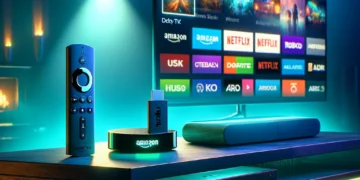

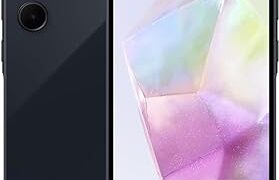






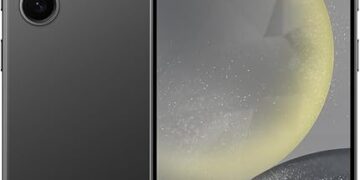




![Apple Watch Series 9 [GPS 45mm] Smartwatch with Midnight Aluminum Case with Midnight Sport Band S/M. Fitness Tracker, ECG Apps, Always-On Retina Display, Water Resistant](https://www.tech-bit.com/wp-content/uploads/2024/06/applewatchseries9gps45mmsmartwatchwithmidnightaluminumcasewith-360x180.jpg)

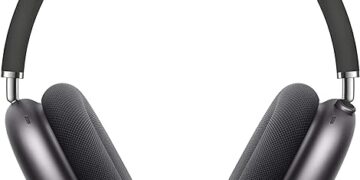
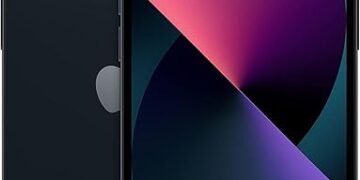
![Apple Watch Ultra 2 [GPS + Cellular 49mm] Smartwatch, Sport Watch with Rugged Black Titanium Case with Black Ocean Band. Fitness Tracker, Precision GPS, Action Button, Extra-Long Battery Life](https://www.tech-bit.com/wp-content/uploads/2024/10/applewatchultra2gpscellular49mmsmartwatchsportwatchwithrugged-360x180.jpg)

